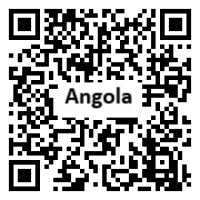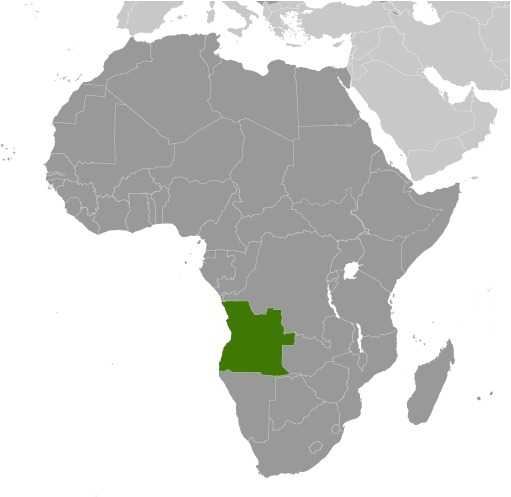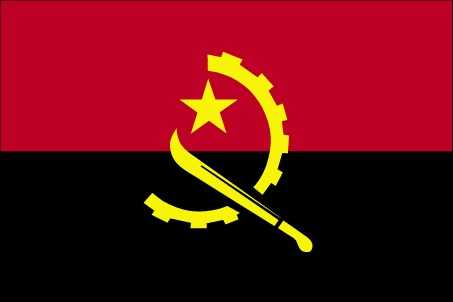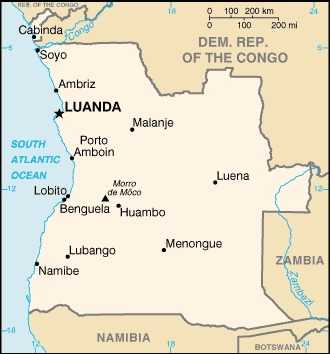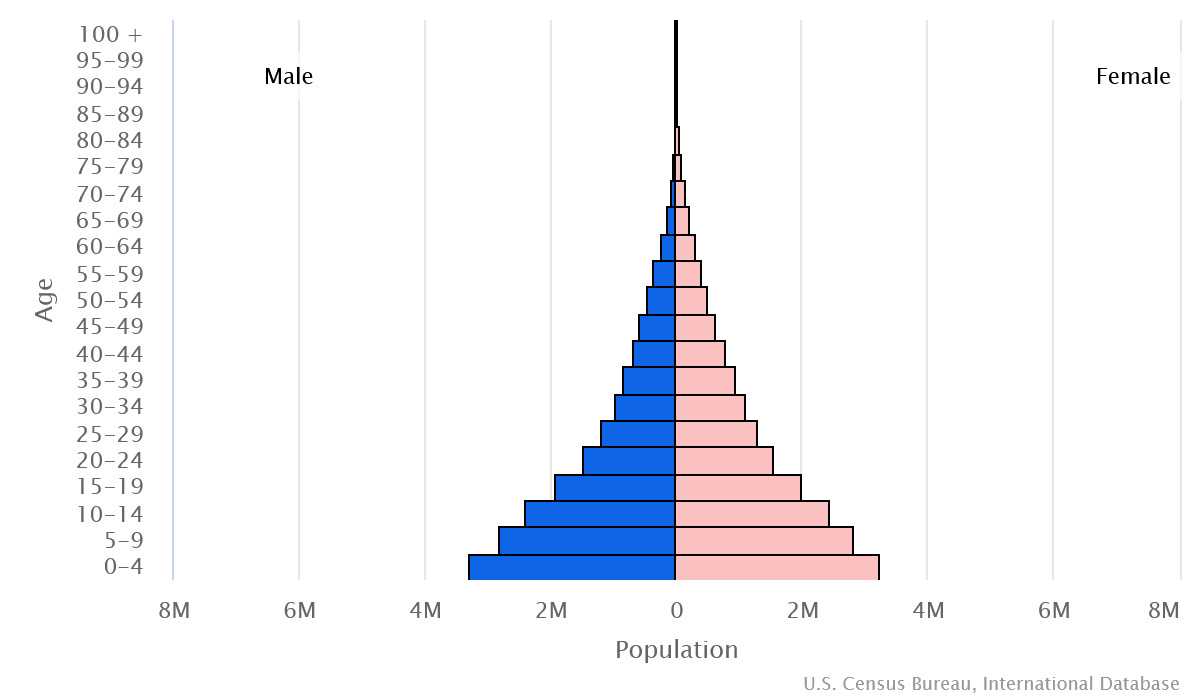Introduction
Background
Angola was the site of multiple kingdoms through the mid-19th century, the most prominent being the Kongo and Ndongo. These kingdoms came in contact with the Portuguese beginning in 1482 and were eventually subjugated over several hundred years as Portugal established a colony. Angola gained independence from Portugal in 1975. A 27-year civil war ended in 2002.
Geography
Area
total: 1,246,700 sq km
land: 1,246,700 sq km
water: 0 sq km
Climate
semiarid in south and along coast to Luanda; north has cool, dry season (May to October) and hot, rainy season (November to April)
Natural resources
petroleum, diamonds, iron ore, phosphates, copper, feldspar, gold, bauxite, uranium
People and Society
Population
total: 37,202,061
male: 18,196,058
female: 19,006,003 (2024 est.)
Ethnic groups
Ovimbundu 37%, Kimbundu 25%, Bakongo 13%, Mestico (mixed European and native African) 2%, European 1%, other 22%
Languages
Portuguese 71.2% (official), Umbundu 23%, Kikongo 8.2%, Kimbundu 7.8%, Chokwe 6.5%, Nhaneca 3.4%, Nganguela 3.1%, Fiote 2.4%, Kwanhama 2.3%, Muhumbi 2.1%, Luvale 1%, other 3.6%; note - data represent most widely spoken languages; shares sum to more than 100% because some respondents gave more than one answer on the census (2014 est.)
Religions
Roman Catholic 41.1%, Protestant 38.1%, other 8.6%, none 12.3% (2014 est.)
Population growth rate
3.33% (2024 est.)
Government
Government type
presidential republic
Capital
name: Luanda
Executive branch
chief of state: President Joao Manuel Goncalves LOURENCO (since 26 September 2017); Vice President Esperanca Francisco DA COSTA (since 15 September 2022); note - the president is both chief of state and head of government
head of government: President Joao Manuel Goncalves LOURENCO (since 15 September 2022); Vice President Esperanca Francisco DA COSTA (since 15 September 2022)
Legislative branch
description: unicameral National Assembly or Assembleia Nacional (220 seats; members directly elected in a single national constituency and in multi-seat constituencies by closed list proportional representation vote; members serve 5-year terms)
Economy
Economic overview
African oil leader and OPEC member; fairly stable currency; widespread poverty; emerging African finance and investment capital; systemic public corruption and lack of oversight; massive foreign direct investment recipient
Real GDP (purchasing power parity)
$210.193 billion (2022 est.)
$203.981 billion (2021 est.)
$201.563 billion (2020 est.)
Real GDP per capita
$5,900 (2022 est.)
$5,900 (2021 est.)
$6,000 (2020 est.)
Agricultural products
cassava, bananas, maize, sweet potatoes, sugarcane, pineapples, tomatoes, onions, potatoes, citrus fruits (2022)
Industries
petroleum; diamonds, iron ore, phosphates, feldspar, bauxite, uranium, and gold; cement; basic metal products; fish processing; food processing, brewing, tobacco products, sugar; textiles; ship repair
Exports
$50.12 billion (2022 est.)
$33.675 billion (2021 est.)
$21.004 billion (2020 est.)
Exports - partners
China 40%, India 9%, Netherlands 7%, France 7%, UAE 7% (2022)
Exports - commodities
crude petroleum, natural gas, diamonds, ships, refined petroleum (2022)
Imports
$28.564 billion (2022 est.)
$18.845 billion (2021 est.)
$15.146 billion (2020 est.)
Imports - partners
China 24%, Portugal 10%, Netherlands 8%, UAE 5%, India 4% (2022)
Imports - commodities
refined petroleum, wheat, cars, poultry, palm oil (2022)
Exchange rates
kwanza (AOA) per US dollar -
Exchange rates:
460.568 (2022 est.)
631.442 (2021 est.)
578.259 (2020 est.)
364.826 (2019 est.)
252.856 (2018 est.)
Page last updated: Tuesday, May 07, 2024
